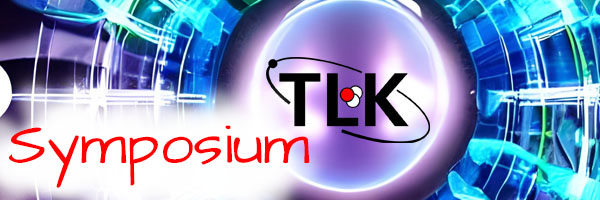For 75 years the shape of the beta spectrum of tritium has been our clearest window on the most mysterious property of the neutrinos, their mass. The discovery of neutrino oscillations gave us proof that neutrinos have mass, which is a direct contradiction of the minimal standard model of particle physics. But how much mass? Oscillations cannot give a number for the mass, other than that...
Highest precision electron spectroscopy is required to determine the neutrino mass from tritium beta-decay. In molecular tritium, initial and final state excitations limit the achievable resolution on the neutrino mass to 100meV. Trapping tritium atoms magnetically at high purity will avoid this systematic effect and allow to surpass the sensitivity limit. Towards this goal, Project 8 will use...
The objective of the KArlsruhe TRItium Neutrino (KATRIN) experiment is the direct measurement of the effective mass of the electron antineutrino with an expected sensitivity of 0.2 eV/c² (90% CL) on the neutrino mass. As β-particle source KATRIN uses molecular tritium which decays in a "Windowless Gaseous Tritium Source” (WGTS). This kind of source consists of a gas dynamic system with a...
Quantum Technologies for Neutrino Mass (QTNM) is a project recently funded in the UK by the Quantum Technologies for Fundamental Physics programme. Its goal is to harness recent breakthroughs in quantum sensors to assess the feasibility of a positive neutrino mass measurement with a sensitivity in the 0.01 - 0.1 eV range. It will use the Cyclotron Radiation Emission Spectroscopy (CRES)...
The Ptolemy experiment plans to observe the cosmic neutrino background through neutrino capture on a tritium target. It is currently in the R&D phase. We present an overview of the design and the current state of the experiment and more recent results on the tritium target.
KATRIN, the KArlsruhe TRItium Neutrino experiment, is leading the charge in measuring the mass of electron neutrinos with an unprecedented sensitivity through the beta-decay of tritium. However, it is ultimately limited by systematic uncertainties like the molecular final state distribution. New technologies must be developed to surpass the experiment's current sensitivity limits. One...
Atomic tritium promises to circumvent the major systematic limitation on direct neutrino mass experiments, enabling Project 8 to reach a sensitivity of 40 meV. Building such an apparatus requires splitting copious quantities of tritium into atoms, and no existing atom source that is compatible with tritium can reach our required flux.
In Mainz, we have built a high-flow hydrogen/deuterium...

